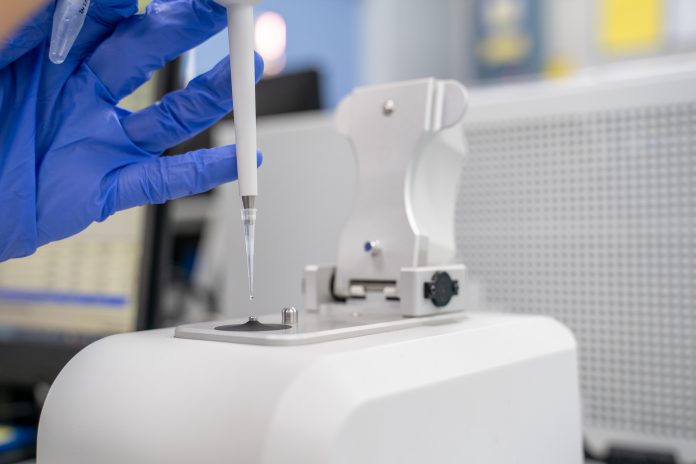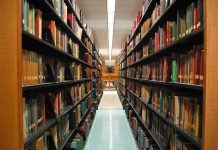Richie Kohman, Synthetic Biology Platform Lead, Wyss Institute at Harvard, tells us about capture techniques to extract RNA from tissues
It is now appreciated that the gene expression pattern of a cell is a valuable indicator of its current state and type. Relying on advances in gene sequencing, researchers have developed techniques to extract RNA from tissues and read out their sequences using commercially available sequencers. Many of these techniques dissociate tissues in the process but this step is problematic because the spatial origin of the transcripts is lost. Given the three-dimensional complexity of tissues in the body, it is important to understand the spatial cellular of gene expression.
For instance, in many conditions such as cancer, the tumour environment is heterogeneous and a better understanding of it can give insight into treatment options or to the discovery of new drug targets. Efforts are now underway to create methods to analyse gene expression within tissue in a fashion that informs of this spatial context. Some approaches involve sequencing fragments of tissue that were micro-dissected or involve converting the tissue itself into a substrate for performing the sequencing steps within (1).
Here we will focus on capture techniques, which rely on the transferring of RNA from the biological sample onto the spatially indexed substrate. The indexing allows the spatial location to be pieced back together after various enzymatic approaches are performed.
General description
Capture techniques all involve the placement of tissue slices onto DNA-indexed surfaces. Once contact is made, the transcripts and bind to the DNA. This allows complementary DNA (cDNA) to be created which can be processed and amplified to create a sample that can be sequenced using common next-generation sequencing (NGS) devices. Spatial information is obtained because the DNA on the surface contains sequences that indicate the lateral location on the surface. NGS reads out this sequence, and a spatial reconstruction can then be created.
Technology development in the area has been an active area of research and a variety of techniques have been created. The differences mostly lie in creation of the indexed surface. Some approaches modify surfaces directly, while others place DNA barcoded beads onto the surface. A common metric that is reported is the spot size of the index, with new techniques trying to decrease this size and increase the resolution of the final reconstruction.
Example approaches
The following non-exhaustive gives a preview of some of the techniques created over recent years. The first prominent example was Spatial Transcriptomics developed in 2016 (2). This approach was commercialised and is now offered by the company 10X Genomics under the product name Visium. High-Definition Spatial Transcriptomics (HDST) developed in 2019 utilises beads placed in captured wells on a glass surface (3). Slide-seq also uses beads, however, they are processed as a monolayer on conventional glass surfaces (4). A technique called Stereo-seq uses fabricated surfaces containing DNA nanoballs for capture (5) whereas Seq-Scope repurposes an Illumina flow cell to create a surface for performing capture-based sequencing (6). Lastly, PIXEL-seq uses a polyacrylamide gel surface which can provide a continuous DNA array as a substrate (7).
Advantages and limitations
Capture techniques have clear advantages over all other spatial transcriptomics techniques. The array can be controlled therefore specific targets or polyadenylated RNA can be analysed. The most appealing aspect however is the low cost and simplicity of the approach. The arrays are fabricated independently of the biological system which tends to have the most variability, complexity, and instability. Also, the arrays are general to a variety of tissue samples and types, therefore their production can be streamlined. Lastly, the sequencing is performed on conventional systems and does not require custom chemistry. All of these aspects allow capture techniques to be performed relatively easily and inexpensively by non-experts.
The major disadvantage however is that capture techniques do not retain any spatial information throughout the thickness of the sample. The molecular content of the three-dimensional tissue gets converted to two dimensions because it is transferred onto a surface. Serial sections can be analysed however no information in the z-dimension of each sample is retained. For the application that truly necessitates three-dimensional information, capture methods are non-ideal.
Conclusion
The simplicity of capture-based methods makes them highly appealing for performing a transcriptomic investigation of tissues. Since its first demonstration in 2016, numerous methods have been developed leading to improved scale and resolution. Undoubtedly new improvements in the space will continue, providing increasingly powerful tools for investigators to use in the future.
References
(1) Turczyk, B. M., Busby, M., Martin, A. L., Daugharthy, E. R., Myung, D., Terry, R. C., Inverso, S. A., Kohman, R. E., Church, G. M., Spatial Sequencing: A Perspective. J Biomol Tech 2020, 31 (2), 44-46.
(2) Ståhl, P. L., Salmén, F., Vickovic, S., Lundmark, A., Navarro, J. F., Magnusson, J., Giacomello, S., Asp, M., Westholm, J. O., et al., Visualization and analysis of gene expression in tissue sections by spatial transcriptomics. Science 2016, 353 (6294), 78-82.
(3) Vickovic, S., Eraslan, G., Salmén, F., Klughammer, J., Stenbeck, L., Schapiro, D., Äijö, T., Bonneau, R., Bergenstråhle, L., et al., High-definition spatial transcriptomics for in situ tissue profiling. Nat Methods 2019, 16 (10), 987-990.
(4) Rodriques, S. G., Stickels, R. R., Goeva, A., Martin, C. A., Murray, E., Vanderburg, C. R., Welch, J., Chen, L. M., Chen, F., et al., Slide-seq: A scalable technology for measuring genome-wide expression at high spatial resolution. Science 2019, 363 (6434), 1463-1467.
(5) Chen, A., Liao, S., Cheng, M., Ma, K., Wu, L., Lai, Y., Qiu, X., Yang, J., Li, W., et al., Spatiotemporal transcriptomic atlas of mouse organogenesis using DNA nanoball patterned arrays. bioRxiv 2021, 2021.01.17.427004.
(6) Cho, C.-S., Xi, J., Si, Y., Park, S.-R., Hsu, J.-E., Kim, M., Jun, G., Kang, H. M., Lee, J. H., Microscopic examination of spatial transcriptome using Seq-Scope. Cell 2021, 184 (13), 3559-3572.e22.
(7) Fu, X., Sun, L., Chen, J. Y., Dong, R., Lin, Y., Palmiter, R. D., Lin, S., Gu, L., Continuous Polony Gels for Tissue Mapping with High Resolution and RNA Capture Efficiency. bioRxiv 2021, 2021.03.17.435795.
Please note: This is a commercial profile
© 2019. This work is licensed under CC-BY-NC-ND.











